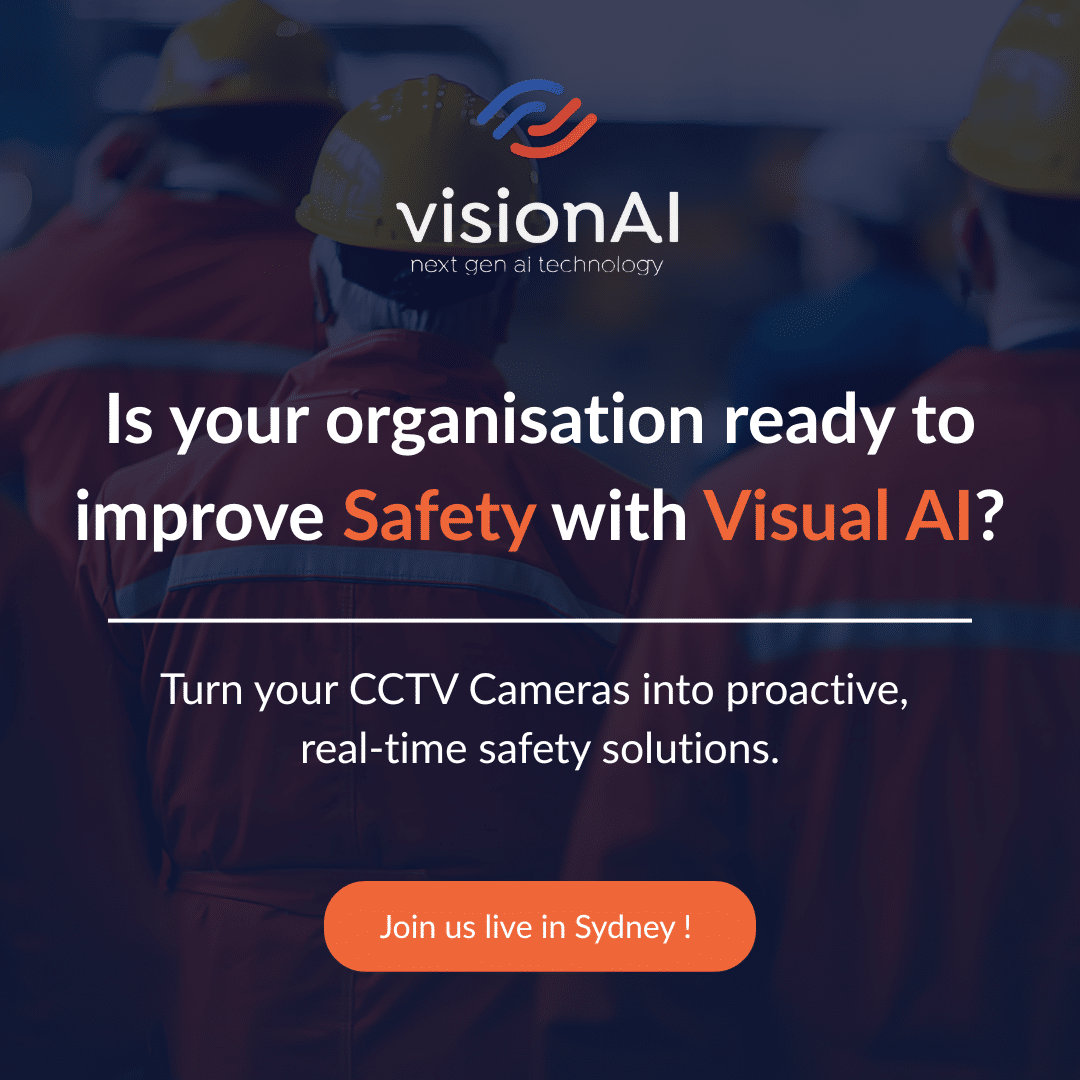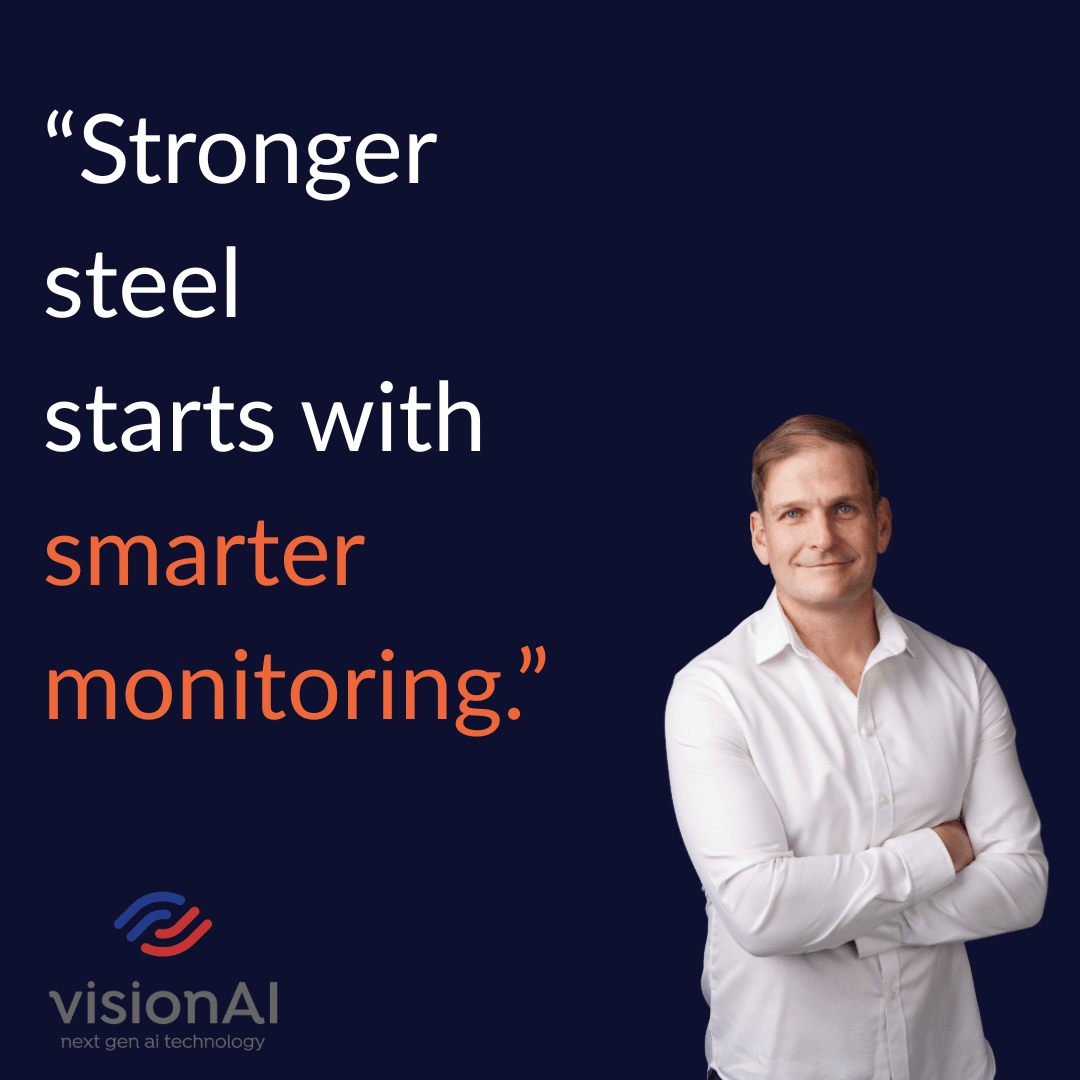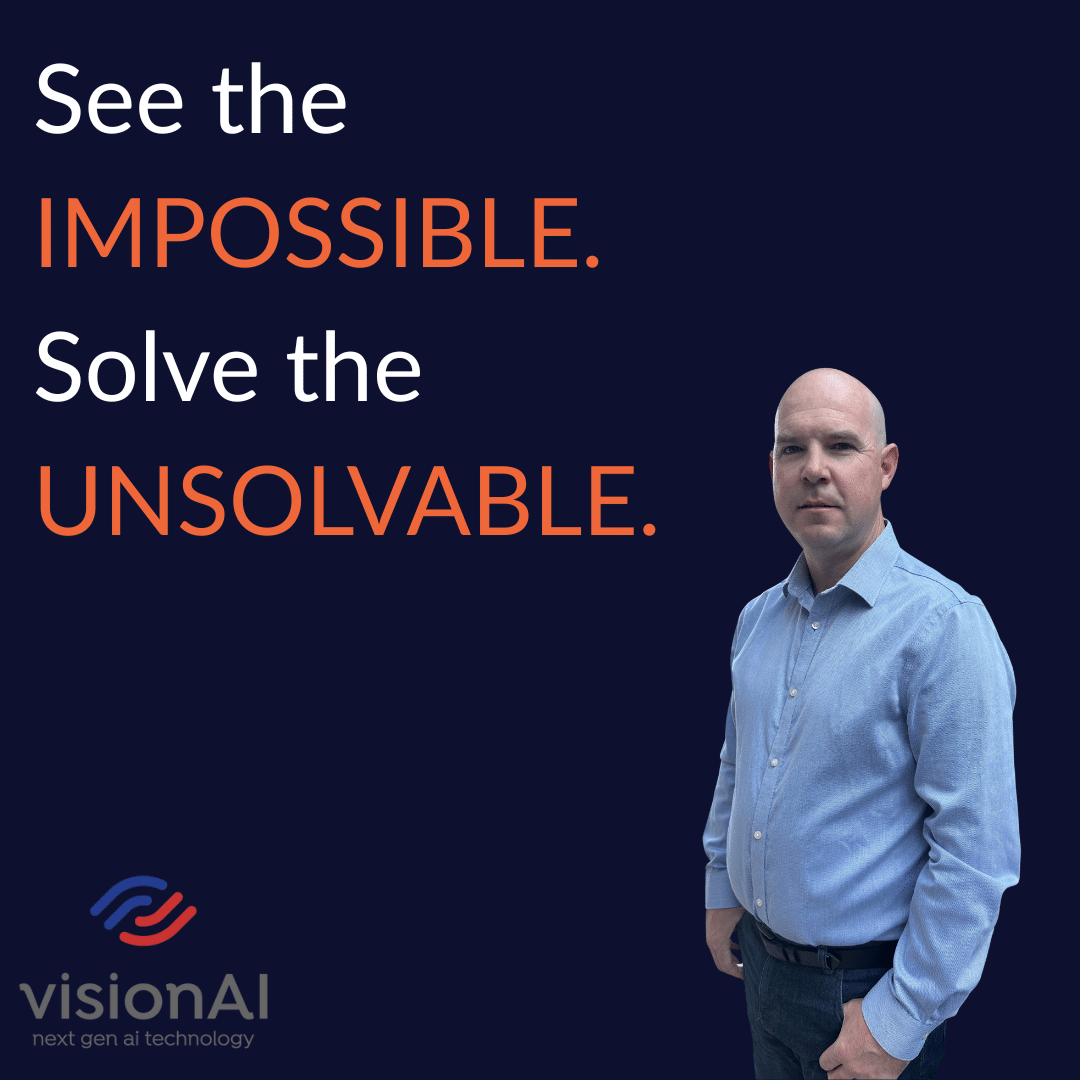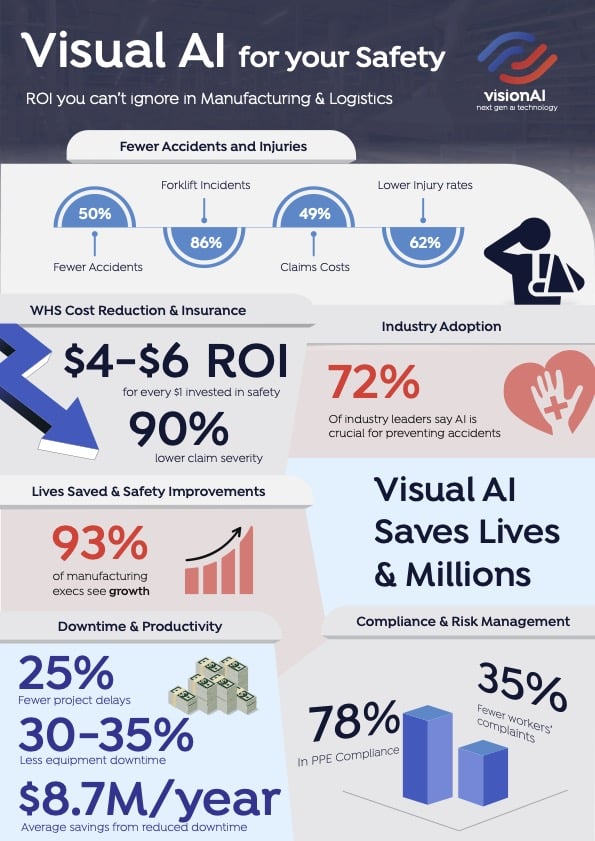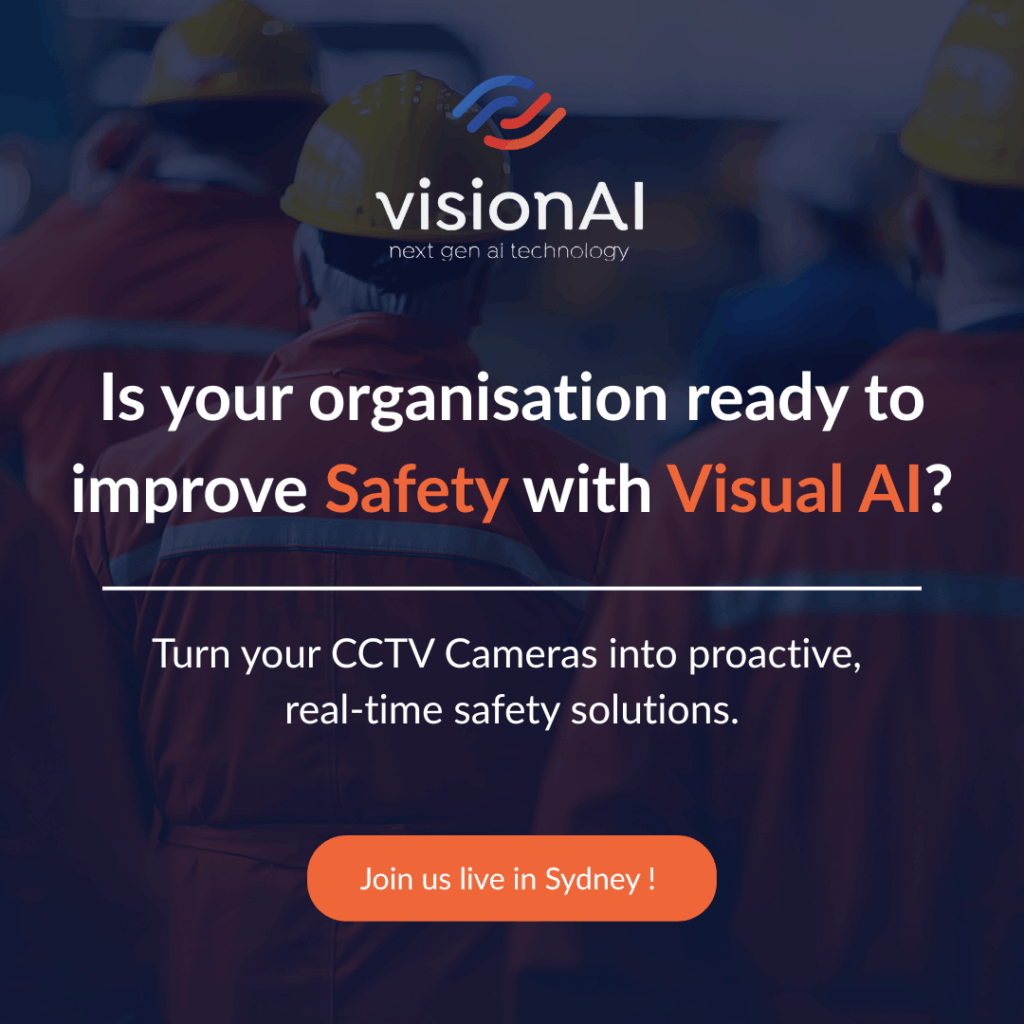
Why Visual AI Cameras for WHS Are Essential
At visionAI, we see how workplace safety across warehouses, logistics, and manufacturing still comes at a heavy cost. Injuries, claims, and downtime remain stubbornly high, even in well-run operations with regular audits, training, and PPE.
“Every week, I speak with operations leaders who are doing everything right on paper, yet incidents still happen,” says Peter Whalley, Head of APAC at visionAI. “The issue isn’t commitment, it’s visibility. You can’t prevent what you can’t see in time.”
AI cameras for WHS change that equation. They identify risks in real time, before they turn into incidents, by analysing behaviours, conditions, and patterns as they occur, not after.
How Visual AI Cameras for WHS Work in Practice
visionAI turns your existing CCTV network into a proactive safety system. Instead of passively recording, your cameras start analysing. When unsafe acts or compliance breaches occur, alerts are sent instantly to supervisors or teams so they can intervene.
“We built visionAI to work with what sites already have,” Whalley explains. “It’s not about adding more hardware. It’s about making your current investment intelligent.”
The software scales across multiple sites and adapts to different operational realities. That shift, from response to prevention, saves lives and drives productivity gains.
“Traditional WHS reporting tells you what went wrong last week,” says Whalley. “AI tells you what’s about to go wrong today.”
Compliance Without Compromise
Compliance is non-negotiable. Visual AI strengthens it through continuous monitoring of PPE, unsafe behaviours, and environmental conditions. The result: higher compliance, fewer violations, and stronger trust across the workforce.
“Most breaches aren’t deliberate,” Whalley notes. “People are under pressure, distracted, or just human. Our system helps them stay safe without micromanagement. It’s guidance, not surveillance.”
By turning safety insights into actionable feedback, visionAI helps managers understand why incidents occur and how to prevent them long term. That builds a culture of learning, not blame.
Future-Proofing Workplace Safety With AI Cameras for WHS
Five years ago, real-time visual intelligence like this wasn’t possible. Today, it’s becoming standard. visionAI’s software platform evolves as your needs change. New AI models can be deployed without replacing your infrastructure.
“WHS risks evolve as fast as operations,” Whalley says. “Forklifts get smarter, warehouses get denser, and AI keeps pace. That’s why software-led safety is the only sustainable path forward.”
Data ownership remains with the client. visionAI provides the framework; the models are trained on your data, under your control.
“We made a clear decision early on: your data is yours,” Whalley affirms. “That’s how trust is built.”
Why AI Cameras for WHS Are the Future
Over 70% of industry leaders now view AI as essential to incident prevention. Human supervision, while critical, cannot match the speed and scale of modern AI monitoring.
“The best safety manager in the world can’t be in 20 places at once,” says Whalley. “AI extends that presence, 24/7, across every corner of a site.”
visionAI is built around a single principle: safety is about people first. By preventing incidents, improving compliance, and lifting productivity, it turns safety from a cost centre into a performance advantage.
Showcasing visionAI in Action
visionAI is already helping organisations across manufacturing, logistics, and warehousing shift from reaction to prevention. Existing CCTV infrastructure becomes a network of intelligent, proactive safety assets.
“When teams see the alerts, they act faster, but more importantly, they start thinking differently,” Whalley says. “That’s cultural transformation, not just compliance.”
Recognition of this impact has been strong. visionAI was recently named a Top 3 finalist at the WHS Show Pitch Off in Sydney, underlining its leadership in AI-driven workplace safety.
“It’s great to see the industry catching up to what we’ve been building toward for years,” Whalley concludes. “Safer, smarter workplaces aren’t the future anymore. They’re here.”
Peter Whalley

